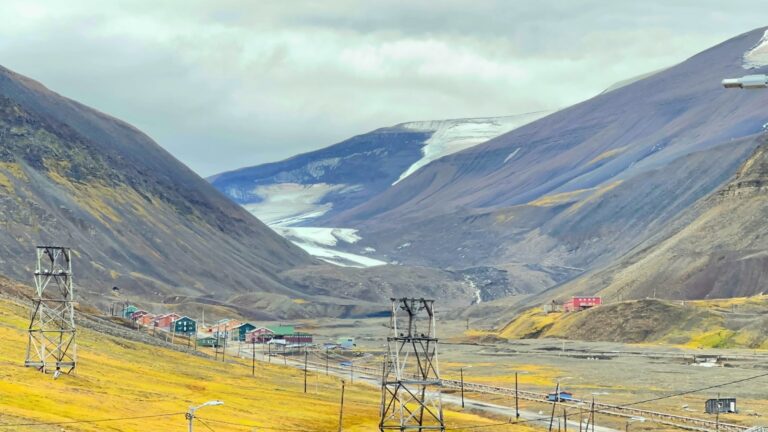A royal and ministerial visit to Longyearbyen highlighted the archipelago’s history, strategic role, and future in a changing Arctic.
Longyearbyen’s central square was filled with flags, speeches, and a distinctly Arctic chill as Crown Prince Haakon and Prime Minister Jonas Gahr Støre joined locals to mark the 100th anniversary of Svalbard’s formal incorporation into Norway.

The centennial celebration, held on 14 August, came against the backdrop of increased international attention on the archipelago and renewed protests from Russia.
Haakon, who first visited Svalbard as a child, spoke warmly of the islands’ place in his life.
“Hundred years ago, Spitsbergen with its belonging islands and the Bear Island was incorporated in our free, independent and indivisible kingdom. Therefore, we are here to celebrate,” he told the gathered crowd. “Svalbard has always had a special place in my heart.”
Prime Minister Støre emphasised the stability that Norway’s stewardship has brought to the remote territory.
“Norway has exercised its authority in Svalbard consistently and predictably for 100 years. This has helped to keep tensions low in the High North,” he said, adding that Norwegian sovereignty is exercised “in accordance with principles of international law.”
From Terra Nullius to Norwegian Territory
Svalbard’s modern history is shaped by the Svalbard Treaty, signed in 1920 and entering into force in 1925.
The treaty granted Norway full sovereignty while allowing citizens of all signatory nations to live and work there. It also established the islands as a demilitarised zone and an economic free area.
Before the treaty, Svalbard was considered terra nullius (land belonging to no one) and was home to a patchwork of mining camps, hunting stations, and research outposts from several nations.
Norwegian scientists played a notable role in securing sovereignty, with geologist Adolf Hoel leading state-supported expeditions from 1907. These expeditions not only mapped the islands but also established a Norwegian presence that bolstered the country’s claims during post–World War I negotiations.
While polar icons such as Fridtjof Nansen inspired national pride, he remained curiously detached from the sovereignty push, focusing more on science than politics.
Hoel, by contrast, saw research, infrastructure, and economic activity as essential tools of “Arctic imperialism,” a strategy that ultimately helped bring Svalbard into the Kingdom of Norway.
Strategic Importance and Modern Tensions
Svalbard’s location in the High Arctic gives it strategic significance far beyond its small population. The islands lie midway between mainland Norway and the North Pole, in waters rich with fish stocks and close to emerging Arctic shipping lanes.
That importance has not gone unnoticed in Moscow. The day before the centennial, the Russian Foreign Ministry accused Norway of “anti-Russian discrimination,” “militarisation,” and violations of the Svalbard Treaty, citing alleged restrictions on Russian economic and scientific activity.
Such statements are not new. Russian officials have issued similar protests in the past, particularly around major anniversaries. Norway has consistently rejected these claims, stressing that all activity on the islands complies with the treaty.
Life After Coal
For much of the 20th century, coal mining was the backbone of Svalbard’s economy. That era officially ended in June, when the last mines closed after years of losses and environmental concerns.
Tourism and scientific research have since become the mainstays of Longyearbyen’s economy, though both bring their own challenges in the fragile Arctic environment.
Prime Minister Støre acknowledged the need to maintain a permanent population and a vibrant community. “This is a day for ceremony and celebration,” he said.
“At a time with increased attention around the northern areas, this is a fine opportunity to mark how Svalbard has been part of the Kingdom of Norway for a hundred years and is the northernmost part of our country.”
Looking ahead, the government has promised to support new Norwegian activity on Svalbard, from expanding Longyearbyen's research facilities to developing sustainable tourism.
For locals, the hope is that the next century will bring the same stability that the past hundred years have offered, even if the political climate in the Arctic continues to shift.

